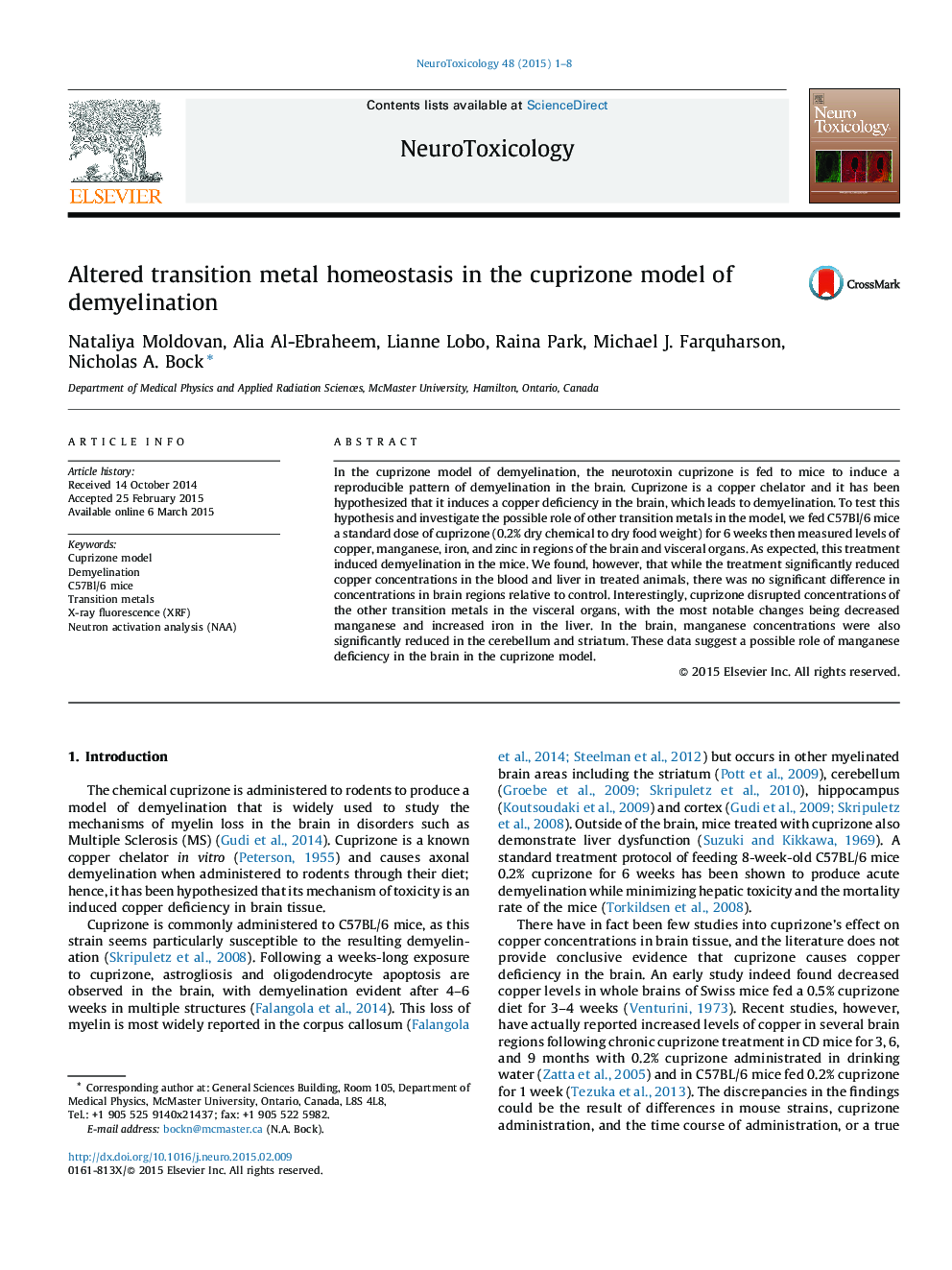| Article ID | Journal | Published Year | Pages | File Type |
|---|---|---|---|---|
| 2589512 | NeuroToxicology | 2015 | 8 Pages |
•The copper chelator cuprizone is thought to induce demyelination in rodent models of disease by reducing copper levels in the brain.•We show that a standard cuprizone treatment significantly reduces copper levels in the blood and liver of treated mice, but not in brain regions.•We further show that cuprizone alters other transition metal levels systemically, and significantly reduces manganese in brain regions.•This suggests that cuprizone may cause demyelination by reducing manganese levels in the brain.
In the cuprizone model of demyelination, the neurotoxin cuprizone is fed to mice to induce a reproducible pattern of demyelination in the brain. Cuprizone is a copper chelator and it has been hypothesized that it induces a copper deficiency in the brain, which leads to demyelination. To test this hypothesis and investigate the possible role of other transition metals in the model, we fed C57Bl/6 mice a standard dose of cuprizone (0.2% dry chemical to dry food weight) for 6 weeks then measured levels of copper, manganese, iron, and zinc in regions of the brain and visceral organs. As expected, this treatment induced demyelination in the mice. We found, however, that while the treatment significantly reduced copper concentrations in the blood and liver in treated animals, there was no significant difference in concentrations in brain regions relative to control. Interestingly, cuprizone disrupted concentrations of the other transition metals in the visceral organs, with the most notable changes being decreased manganese and increased iron in the liver. In the brain, manganese concentrations were also significantly reduced in the cerebellum and striatum. These data suggest a possible role of manganese deficiency in the brain in the cuprizone model.
